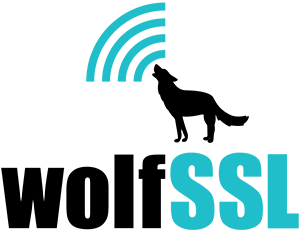A new year, another attack on TLS. Karthikeyan Bhargavan and Gaetan Leurent of INRIA recently announced the new attack. TLS 1.2 allows negotiation of the hashing algorithm used for signatures, typically to “upgrade” the hash to a higher security level. Before TLS 1.2 a combination of MD5 and SHA1 were used for signatures. TLS 1.2 […]
Read MoreMore TagCategory: Uncategorized
CES Big Story #3: Internet of Things Hyper Mania Hits Hard Reality – Security
Everybody with a pulse is excited about the IoT, for all of the right reasons, but the market is starting to recognize the challenges of security. See the following EE Times article by John Curran of Accenture for a description of the security challenges of IoT: https://www.eetimes.com/author.asp?section_id=36&doc_id=1328584. Fortunately, wolfSSL is here to help secure your […]
Read MoreMore TagIoT Security: Start with the Fundamentals
Securing connected devices, including the IoT, is very important to us at wolfSSL. Larry Stefonic, CEO and Co-Founder of wolfSSL, recently published a guest post on the Xively blog that talks about the fundamentals of device security. This post includes commentary on securing the connection, device authentication, secure firmware updates, and securing the data on […]
Read MoreMore TagwolfSSL Roadmap for 2016
Curious about new features and additions to wolfSSL technologies for the coming year? Some items on our current roadmap include: – Early TLS 1.3 adoption – Non-blocking Crypto support – DTLS robustness improvements – Curve25519 / Ed25519 integration at the TLS level – Increased IoT platforms – More resource reduction options In terms of new […]
Read MoreMore TagwolfSSL with devkitPro
wolfSSL has a port to devkitPro, giving an option to game developers to secure information with the embedded, lightweight, wolfSSL TLS/SSL library. The low memory footprint size of wolfSSL allows for efficient use of security while leaving plenty of room for the game itself. The low memory size of wolfSSL is something that has been […]
Read MoreMore TagwolfSSL Release Version 3.8.0
wolfSSL version 3.8.0 has been released and is now available for download. The release has many new feature additions and some minor fixes. One of the new feature additions is that there have been APIs added for single shot hashing, creating a signature, and verifying a signature. This allows users to easily create a hash […]
Read MoreMore TagwolfSSL Partners with Renesas to Deliver SSL/TLS Based Secure Communications
wolfSSL Inc, embedded SSL/TLS and cryptography provider for the IoT, has partnered with Renesas Electronics, a global leader of semiconductor manufacture. Through the support for their high performance microprocessor series of RX and RZ, wolfSSL delivers secure connections of IoT solution with a lightweight high throughput secure communication library. Renesas WebsitewolfSSL Embedded SSL/TLS Library
Read MoreMore TagWhen to use Pre Shared Key (PSK) Cipher Suites
PSK cipher suites are a superb choice in low resource environments where both ends of the connection can be controlled. With PSK, each side of the connection has an already agreed upon key to use rather than agreeing on one during the TLS handshake. This reduces resource consumption for each session using PSK. For example, […]
Read MoreMore TagwolfSSL JNI 1.3.0 Released
Version 1.3.0 of wolfSSL JNI is now available for download. wolfSSL JNI provides Java applications with a convenient Java API to the widely-used wolfSSL embedded SSL/TLS library, including support for TLS 1.2 and DTLS 1.2. Release 1.3.0 has bug fixes and new features including: – Updated support to wolfSSL 3.7.0 – Added finalizers for WolfSSLContext […]
Read MoreMore TagUser Crypto Modules
wolfSSL has a new feature to allow for users to plug in their own crypto for RSA if they so choose. This is a great feature for students looking to test their own RSA operations in a SSL/TLS connection or for those wanting to see if they can speed up operations in the IoT realm […]
Read MoreMore Tag
